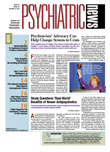There may be thousands of drug products being prescribed and dispensed to patients in the United States that have never been reviewed by the Food and Drug Administration (FDA) for safety and efficacy or approved for marketing. The agency is now taking steps to address the potentially large problem.
In June 2006, the FDA released a guidance document, “Marketed Unapproved Drugs—Compliance Policy Guide,” to clarify the rules regarding drugs on the market that have not been reviewed or approved by the agency's normal process and the agency's plan to enforce them.
Many of these unapproved drugs are advertised and listed in reference books such as the Physicians' Desk Reference, prescribed by physicians, and dispensed or sold to patients, according to the FDA guidance document. Physicians and pharmacists are usually not aware of the unapproved status of these drugs, which can be distributed based on a 10-digit number known as the National Drug Code (NDC). The NDC number is issued to all types of drug products, including unapproved investigational drugs, and does not guarantee a drug's approval status. These products' labeling information does not distinguish their approval status, nor is the labeling necessarily reviewed by the FDA for safety claims and indications.
The FDA says on its Web site that most of these products remain on the market illegally for “a variety of historic reasons.” Most became available before the Federal Food, Drug, and Cosmetic Act was revised in the 1960s to require that a new drug be evaluated by the FDA for efficacy as well as safety. Before these regulations, new drugs only needed to be shown as safe, and drugs deemed the same or similar to approved drugs needed no independent review and approval process by the agency. The labels of these products may not conform to current regulatory standards and may carry unapproved claims and indications. Although the FDA had contracted with the National Academy of Sciences/National Research Council to evaluate the effectiveness of thousands of products approved only for safety between 1938 and 1962, not all products have gone through the approval process.
Even the drug products deemed illegal have not all been forced off the market. Other provisions in the regulations have allowed older drugs without labeling updates to slip through the cracks.
It is unknown how many currently marketed drugs are unapproved, and the agency does not maintain a complete list of these products. The guidance estimated that “several thousand drug products are marketed illegally without required FDA approval” today and admits that the agency is“ unable to take action immediately against all. . .illegally marketed products” because of a lack of resources.
Since the release of the guidance last year, the FDA has been systematically issuing sanctions against certain unapproved products by demanding their withdrawal from the market or convincing some manufacturers to go through the official process by filing a New Drug Application for the agency's review in order to legalize their products and update the product labeling. A short list of drugs and manufacturers against which enforcement actions have already been taken is posted on the FDA's Web site.
The guidance document claims that the enforcement priorities are given to drugs that have potential safety risks, lack evidence of effectiveness, are fraudulently promoted and sold, “present direct challenges to the new drug approval and [over-the-counter] drug monograph systems,” or are reformulated to evade FDA enforcement action. Priority is also given to unapproved new drugs that violate the regulations in other ways.
In 2006, unapproved products containing quinine and carbinoxamine with unapproved labeling were targets. This September, the agency announced that it will take “enforcement action” against manufacturers of unapproved hydrocodone-containing cough syrups, citing reports of medication errors due to formulation changes in the unapproved products and confusion over their brand names. The agency is also concerned that “no hydrocodone cough suppressant has been established as safe and effective in children under 6 years of age, and some of these unapproved products carry labels with dosing instructions for children as young as 2 years old,” warned Steven Galson, M.D., M.P.H., director of the FDA's Center for Drug Evaluation and Research in a press release.
The FDA Web page lists selected drugs and companies that have been cited for enforcement actions, but includes no psychiatric drugs. However, the FDA has not released a complete list of all unapproved drug products on the market. Psychiatrists may be treating patients who are taking, for example, unapproved hydrocodone, levothyroxine, and quinine products (for restless legs syndrome).
Additional information about unapproved drugs and FDA actions is posted at<www.fda.gov/cder/drug/unapproved_drugs/default.htm>.“ Guidance for FDA Staff and Industry: Marketed Unapproved Drugs—Compliance Policy Guide” is posted at<www.fda.gov/cder/guidance/6911fnl.pdf>.▪
